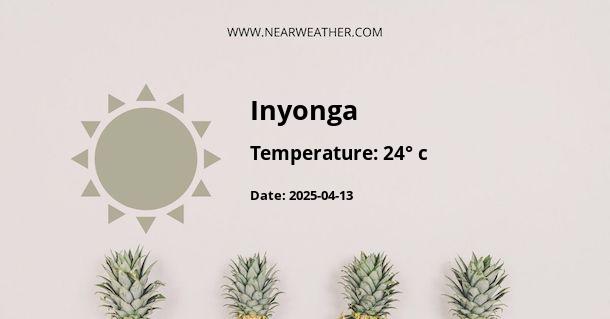Introduction
Inyonga is a small town located in the Rukwa region of Tanzania. This area is known for its unique climate and changing weather patterns, which significantly impact the local agriculture, lifestyle, and tourism. In this article, we will delve into a comprehensive review of Inyonga's climate and weather throughout the year.
Overview of Inyonga's Climate
Inyonga is characterized by a tropical savannah climate, which is predominantly hot and humid with a significant amount of rainfall throughout the year. The Köppen-Geiger climate classification system categorizes Inyonga's climate as 'Aw', with 'A' signifying a tropical climate and 'w' denoting a dry winter season.
Temperature
The average annual temperature in Inyonga is approximately 23.0 °C. The warmest month is typically November, with an average temperature of around 24.5 °C. Conversely, the coolest month tends to be July, with an average temperature of about 21.5 °C.
Precipitation
"Inyonga receives an average annual precipitation of approximately 1100 mm. The wettest month is usually December, with an average rainfall of about 215 mm. On the other hand, the driest month is typically July, with negligible rainfall."
Humidity and Wind
The relative humidity in Inyonga ranges between 50% and 90%, with higher levels experienced during the rainy season. The area also experiences moderate wind speeds that average around 3.6 meters per second, with the windiest month being October.
Seasonal Changes
Inyonga experiences two main seasons: the wet season and the dry season. The wet season typically runs from November to April, characterized by high humidity and frequent heavy downpours. The dry season, running from May to October, is marked by lower humidity levels and minimal rainfall.
Effect on Agriculture
Inyonga's tropical savannah climate significantly impacts local agriculture. The high rainfall during the wet season supports the growth of a variety of crops, including maize, rice, and various types of vegetables. However, the dry season often poses challenges due to water scarcity and high temperatures, which can negatively affect crop growth.
Effect on Lifestyle
The climate in Inyonga also shapes the lifestyle of its inhabitants. During the wet season, locals engage in agricultural activities, while the dry season is often used for harvesting and storing produce. Additionally, the warm weather year-round enables outdoor activities and social events, fostering a strong sense of community among the residents.
Effect on Tourism
While Inyonga is not a conventional tourist destination, its unique climate and changing weather patterns offer a fascinating experience for eco-tourists and climate enthusiasts. The wet season, with its lush greenery and thriving wildlife, is particularly appealing for nature lovers.
Conclusion
In conclusion, Inyonga's climate is a dynamic blend of tropical warmth, abundant rainfall, and distinct seasonal changes. Understanding these patterns is crucial for appreciating the local agriculture, lifestyle, and potential for tourism. As climate change continues to impact global weather patterns, ongoing monitoring and research in areas like Inyonga are essential for developing strategies to mitigate its effects and ensure sustainable development.
References
- Climate-Data.org. (n.d.). Climate Inyonga: Temperature, Climate graph, Climate table for Inyonga - Climate-Data.org. Retrieved from https://en.climate-data.org/africa/united-republic-of-tanzania/rukwa/inyonga-37598/
- World Data. (n.d.). Average monthly Rainfall, Sunshine, Temperatures, Humidity, Wind Speed in Inyonga. Retrieved from https://www.worlddata.info/africa/tanzania/climate-inyonga.php
A - Inyonga's Latitude is -6.716670 & Longitude is 32.066669.
A - Weather in Inyonga is 24° today.
A - Climate Conditions in Inyonga shows light rain today.
A - Humidity in Inyonga is 75% today.
A - Wind speed in Inyonga is 4.07 km/h, flowing at 129° wind direction. today.
